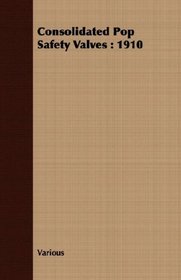Search -
Consolidated Pop Safety Valves: 1910
Consolidated Pop Safety Valves 1910
Author:
Introduction THE Consolidated Safety Valve Company has within the last two years inaugurated two exceedingly important movements in the safety valve practice of this country movements which are causing universal modifications of design, and, for the first time in the history of engineering, are putting the methods of safety valve rating and spec... more »
Author:
Introduction THE Consolidated Safety Valve Company has within the last two years inaugurated two exceedingly important movements in the safety valve practice of this country movements which are causing universal modifications of design, and, for the first time in the history of engineering, are putting the methods of safety valve rating and spec... more »
ISBN-13: 9781406782769
ISBN-10: 1406782769
Publication Date: 10/9/2007
Pages: 80
Rating: ?
ISBN-10: 1406782769
Publication Date: 10/9/2007
Pages: 80
Rating: ?
0 stars, based on 0 rating




